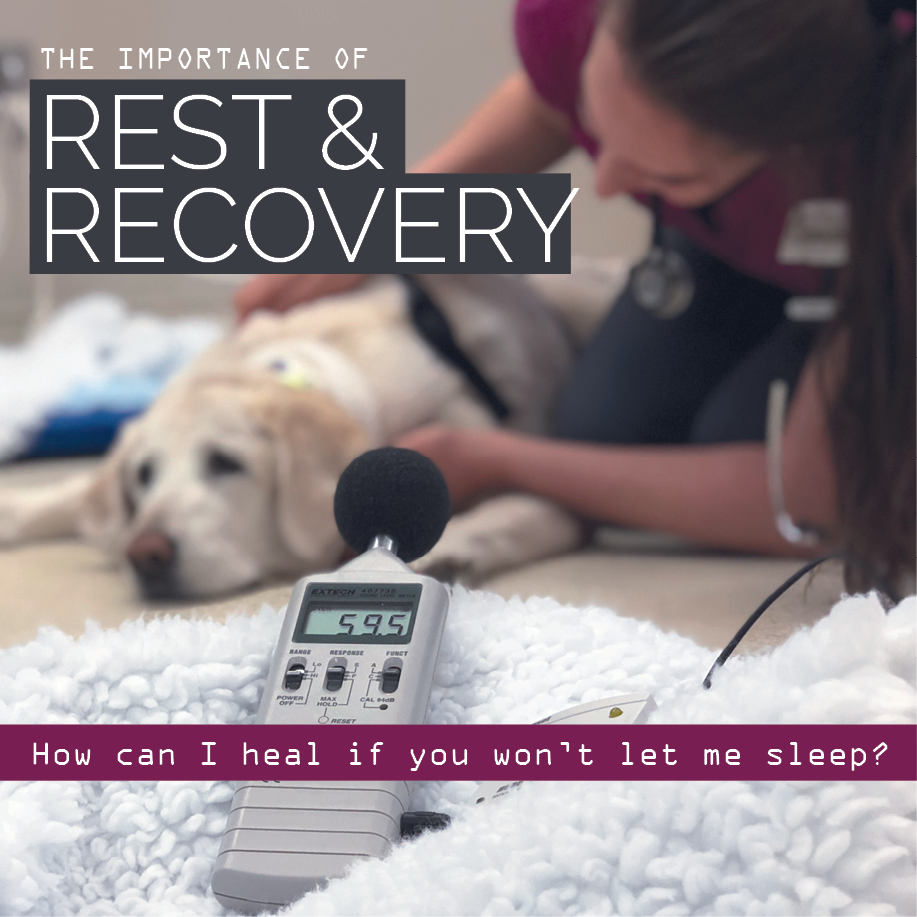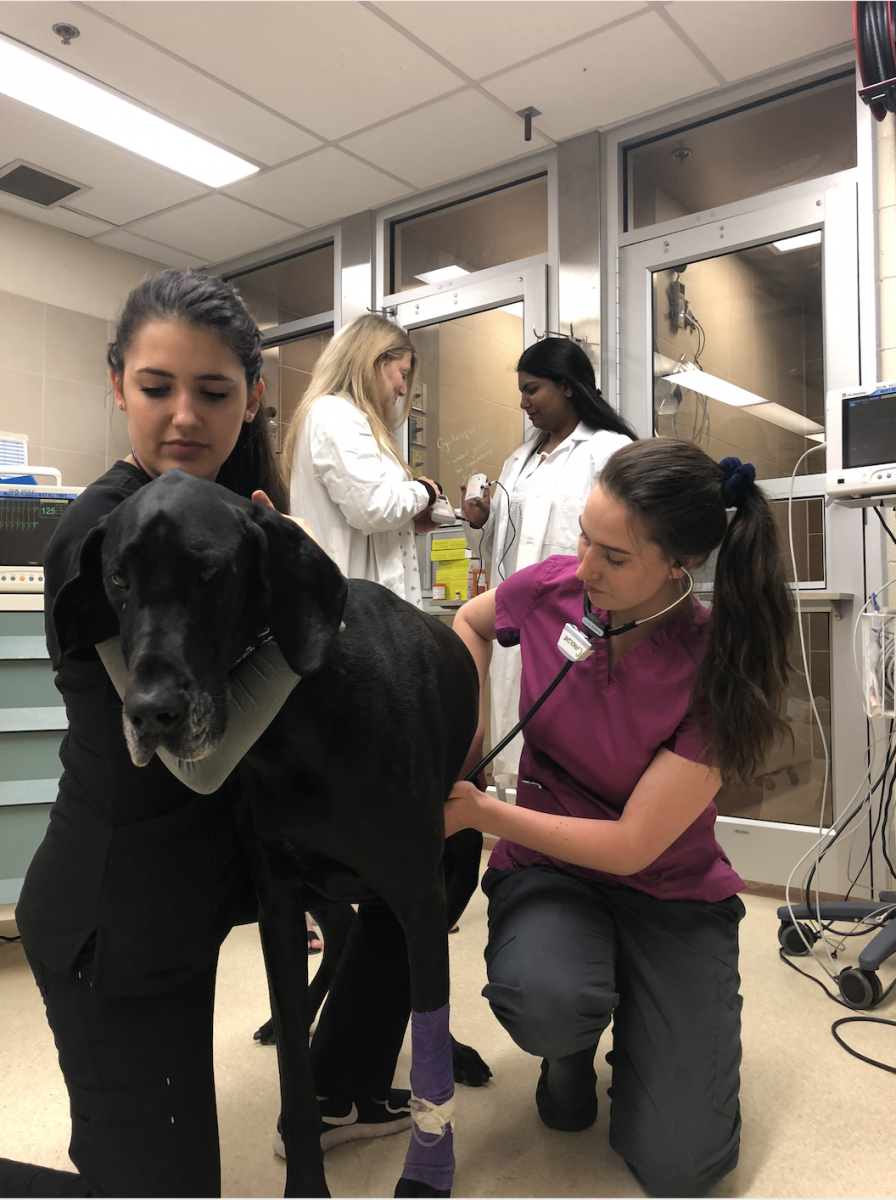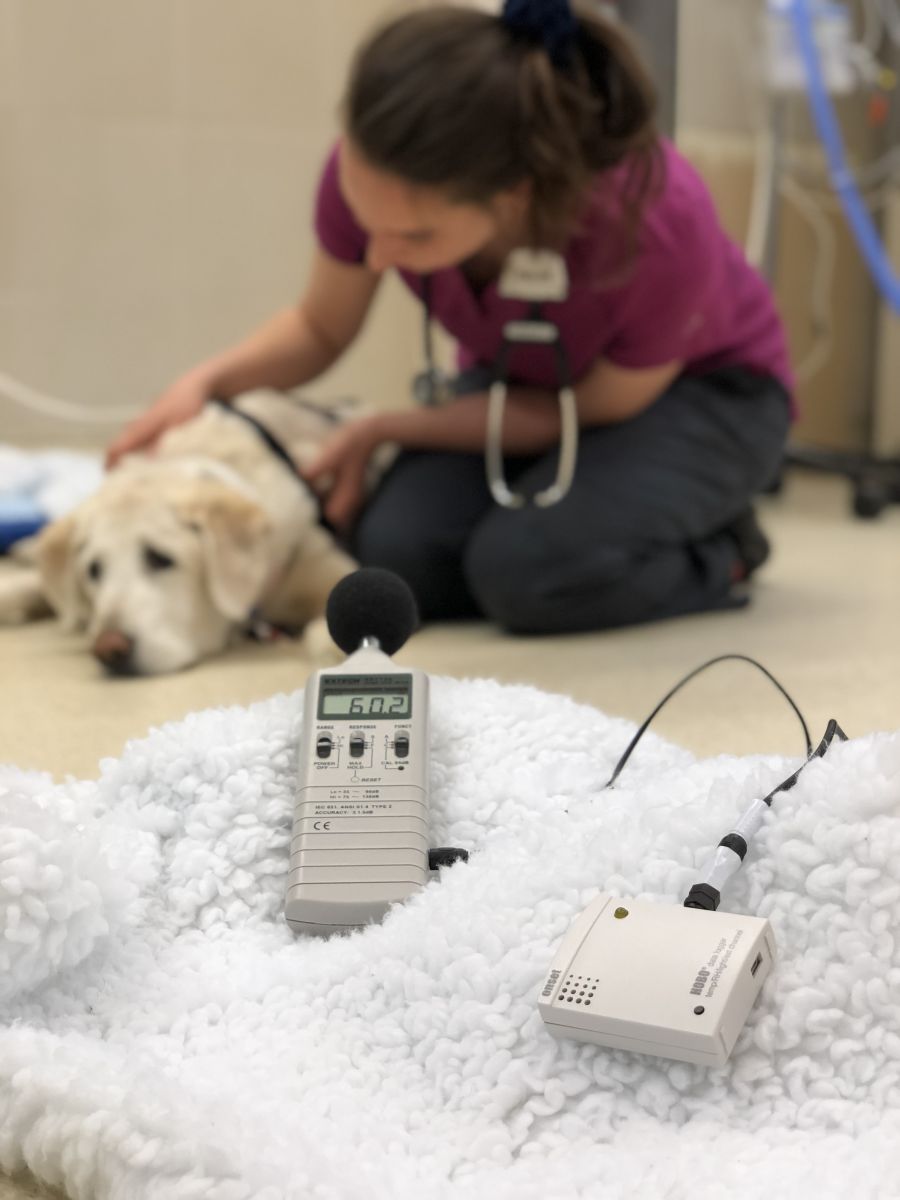How Can I Heal If You Won’t Let Me Sleep?
 What if it was possible to cure the damage done by a heart attack by simply adjusting light and noise in the intensive care units (ICU) in hospitals? What if some of the conditions regularly experienced by patients in ICUs could actually do more harm than good?
What if it was possible to cure the damage done by a heart attack by simply adjusting light and noise in the intensive care units (ICU) in hospitals? What if some of the conditions regularly experienced by patients in ICUs could actually do more harm than good?
What if by adjusting the physical surroundings in the space where patients recover helped them heal faster, go home sooner and live a longer, healthier life? What if we applied successes learned in human medicine ICUs to improve the health and welfare of our animal companions?
In photo: Martino’s data logger measures light and sound in OVC’s Intensive Care Unit (ICU). ICU patient, Cali, in background.
The key to unlocking the answers to many of these questions lies in circadian rhythms, says Tami Martino, director of the University of Guelph’s Centre for Cardiovascular Investigations and associate professor within the Department of Biomedical Sciences at the Ontario Veterinary College (OVC).
Circadian rhythms are found in all living organisms, including humans, animals and plants. Often referred to as the body’s biological clock, these rhythms follow the 24-hour daily cycle of our earth and help us adapt to light and dark, signal when to be active and when to rest and indicate when to sleep and be awake. Circadian rhythms are important for many critical body functions including the way that we heal from disease or injury.
When rhythms are disrupted, the body fails to receive the correct signals to function at an optimal level. Since up to 25 per cent of the population engages in shift work at some point in their working career, travellers frequently deal with jetlag and people commonly suffer from sleep disorders – there are many situations where circadian rhythms can be disrupted in our everyday lives.
Martino’s research reveals that even short- term disruption of circadian rhythms, such as that experienced in ICUs and hospital wards, may worsen a patient’s long-term outcome.

“In the first few days after a person suffers a heart attack, immune cells flood into the heart to clear away the debris and damage. A scar forms and the heart has to adapt to the damaged area. Over time this can lead to heart failure for the patient,” Martino says. “Our studies showed that when circadian rhythms and sleep are disrupted during this critical early healing period, the immune cell responses are altered leading to larger scars and worse outcomes. If we can control simple things like light and noise that collude to disturb our body’s rhythms and sleep during those crucial couple of days after a heart attack, we can minimize scarring and the patient has the potential to live a longer, healthier life.”
Can it really be just that simple?
Martino is particularly interested in studying heart disease, but she says that the principle is relevant any time there’s a healing inflammatory reaction in cases like a trauma, such as being hit by a car, burns or a traumatic brain injury.
Martino stresses that we may have the potential to improve health outcomes in these areas by recognizing the impact circadian rhythms have on healing.
“In human medicine, disruptions to circadian rhythms In ICUs occur with light, noise and frequent staff-patient interactions, especially at night, making it more difficult for our body to heal,” Martino says, adding, “maintaining circadian rhythms and sleep is a promising non-pharmaceutical approach to improve healing.”
For this reason, Martino and her team have started to investigate if they can adapt these research findings relevant in human medicine to help our animal companions as well. Her team is currently gathering data that will help understand the impact of light and sound at night within veterinary spaces.
The team is using data loggers, devices that measure light and sound over a 24-hour period (day and night) within a variety of animal care settings including OVC’s ICU and wards, animal shelters and primary care veterinary hospitals in Ontario. This will help set a base line for current healing environments for pets in critical conditions.
Martino is also investigating another rapidly growing field of human circadian medicine, called chronotherapy, or the timing of therapy.
“In human medicine, we are discovering that chronotherapy can benefit some cardiovascular treatments — by timing medications and therapies to the body’s physiologic and molecular rhythms, we can improve efficacy, sometimes reduce toxicity and improve outcomes,” Martino says. “This new field of study also has the potential for translational benefits to improve the health and well-being of our animal companions as well.”

Martino’s ICU findings indicate that simple modifications can be made to help maintain circadian rhythms and sleep, such as sound-proofing and light-proofing (especially eliminating blue wavelength light at night) in certain areas. Other changes, such as relocating computer screens away from patient areas and adjusting the shifts or timing of staff checks, is already helping human patients.
“We have a tremendous, timely opportunity to apply our findings at OVC to benefit animal patients and lead the way into uncharted territory within the world of veterinary medicine,” Martino says.
“Our research as leaders in circadian medicine has the potential to impact both human and veterinary hospital design and, more importantly, improve the health and welfare of all species.”
The Power of Sleep
All life on earth is subjected to a 24-hour day and night (circadian or diurnal) cycle, which is controlled by tiny molecular clocks inside our cells. These clocks help us know when to be active or rest, awake or asleep.
Martino’s research shows that maintaining circadian rhythms and sleep in ICUs is a promising non-pharmaceutical way to improve outcomes for patients. While Martino’s focus is on new treatments for heart disease, her findings may also be applied to a broad range of clinical priorities including mental health, cancer biology, women’s health, microbiome and gut health, sleep, shiftwork, exercise and diet.
Tami Martino investigates
how disrupting body clocks
and sleep drives diseases.
Her lab also examines how circadian biology can be therapeutically manipulated using genetic, environmental or pharmacological approaches to prevent, slow or reverse damage.
Read more in the fall / winter issue of Best Friends Magazine.

